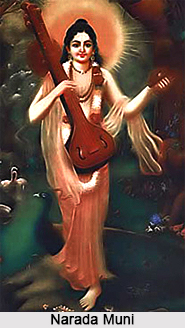 Vedangas also called the Limbs of the Vedas basically tells us how t understands the Hindu texts methodically. Vedangas in Narada Purana helps in reciting and reading Vedas. It also has grammar which is useful in deep comprehension of Vedas and Jyotisha to practice deep knowledge gained. The Vedangas look as if to have been originated from the Britihmanas and the Aranyakas These special texts are in the Sutra style.
Vedangas also called the Limbs of the Vedas basically tells us how t understands the Hindu texts methodically. Vedangas in Narada Purana helps in reciting and reading Vedas. It also has grammar which is useful in deep comprehension of Vedas and Jyotisha to practice deep knowledge gained. The Vedangas look as if to have been originated from the Britihmanas and the Aranyakas These special texts are in the Sutra style.
In Narada Purana, Siksa deals with teachings the correct articulation and emphasis of the Samhita of the Vedas. There are rules for chanting the Vedas given vividly. He also explains the art of music and singing and other related sciences. Narada says that the mantras chanted with proper intonations will only be beneficial; otherwise, they will destroy even the performer of the yajna as in the case of the incorrect accent.
Svara has also been classified. While describing melody Narada says that the term `Gandharva` denotes the singing of songs together with playing on the musical instruments. He also enumerates the ten qualities of song. As far as musical instruments are concerned Narada explains Veena and Venu. Metre has also been enlightened.
According to Sage Narada a person should study Vedas in the early hours of the day. He should meditate the period between the equinox in autumn and spring. What he should eat, drink has also been mentioned clearly by Narada. The precautions needed to be taken for securing a clear and sweet voice has also been enumerated here.
 As per Narada Purana Kalpa is divided in five divisions, namely, Veda, Samhita, Angirasa, Santi and Nakshatra Kalpas.
As per Narada Purana Kalpa is divided in five divisions, namely, Veda, Samhita, Angirasa, Santi and Nakshatra Kalpas.
The discipline of grammar also has been pointed out in Narada Purana. It says that grammar ifs the face of the Vedas and it deals with gender types, case, compounds and many more.
Likewise, Narada`s approach to grammar is found to be not very systematic, as he gives easy instances without stating the rules on the topics.
Nirukta is the ear of the Veda. It is divided into addition, change, modification, omission, and joining of letters in Narada Purana.
As in the case of Vyakarana, in connection with Nirukta also Narada gives only a brief account. No rules have been illustrated, only enumeration of some instances. Narada gives a short description about the metres common in Vedic and classical Sanskrit. He also gives rules for prosody.
In consonance with Narada Purana, the portion related to Jyotishastra is a conceptual part of Brahma`s work in 4, 00,000 verses. This is divided into astronomy, horoscopy, natural astrology.
The issues of astronomical section include eclipses, shadows, planetary juxtapositions, arithmetical operations and many more. Some of the information given is also mentioned in Suryasiddhanta though it is not copied but source can be identical.
The topics dealt in the section on horoscopy include zodiac sign divisions, conception, lunar combinations, and so on. The portion on horoscopy fully in content wise has similarities with the Brihat Samhita of Varahamihira. Besides, several verses of the total of this particular part in the Naradiya are alike to Narada Samhita.
Vedangas in Narada Purana give a broad idea on various sciences. Narada`s approach on these topics seems to be completely different. Though the information imparted is similar to that of many other Hindu texts.












